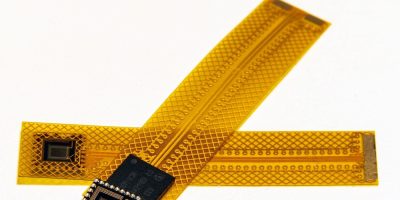Nexperia has introduced a new series of step-down DC-DC converters featuring devices with stand-by and operating efficiency that offer engineers flexibility for designing various fixed and portable battery-powered applications across consumer, industrial and automotive end-markets.
The NEX30606 is a high-efficiency, high-accuracy step-down converter that offers a choice of 16 resistor-settable output voltages from input voltages ranging from 1.8 V to 5.0 V. It can deliver up to 600 mA of output current and offers the industry’s lowest operating quiescent current (Iq) of 220 μA. This feature makes it ideal for wearable consumer applications like hearing aids, medical sensors, patches and monitors in addition to battery-powered industrial applications like smart meters, asset-tracking and industrial (IIOT) and narrow-band internet-of-things (NBIOT) devices. This device provides >90% switching efficiency for load currents ranging from 1 mA to 400 mA and has only 10 mV of output voltage ripple when stepping down from 3.6 V Vin to 1.8 Vout.
The NEX40400 step-down converter combines high efficiency (up to 8 % higher efficiency than close competition at low – mid load condition) with low operating quiescent current (60 μA typ.) and can provide up to 600 mA output from a wide 4.5 V to 40 V input range for applications. Featuring PFM (Pulse Frequency Modulation) for high efficiency at low to mid loads and Spread Spectrum Technology for minimising EMI, the converter is ideal for industrial distributed power systems and grid infrastructure (e.g. smart e-meters) as well as consumer white goods. Low shutdown supply current (0.3 μA) also makes this converter suitable for use in battery-powered home appliances. Nexperia also plans to release an AEC-Q100 qualified version of the NEX40400 later in 2025 for use in automotive applications such as body electronics and lighting, in-vehicle infotainment (IVI) systems, advanced driver assistance systems (ADAS), as well as instrument clusters, cameras and displays.
Both the NEX30606 and NEX40400 offer traditional IC protection features such as Overcurrent Protection (OCP), short circuit protection, and thermal shutdown, ensuring reliability in demanding environments.
The NEX30606 is available in a space-saving WLCSP package measuring only 1.09 mm x 0.74 mm with a 0.35-mm pitch, which is almost 50% smaller than similar competing converters. The NEX40400 comes in a cost-effective 6-lead SOT8061-1 (TSOT23-6) plastic, surface-mounted package measuring 2.9 mm x 2.8 mm.







